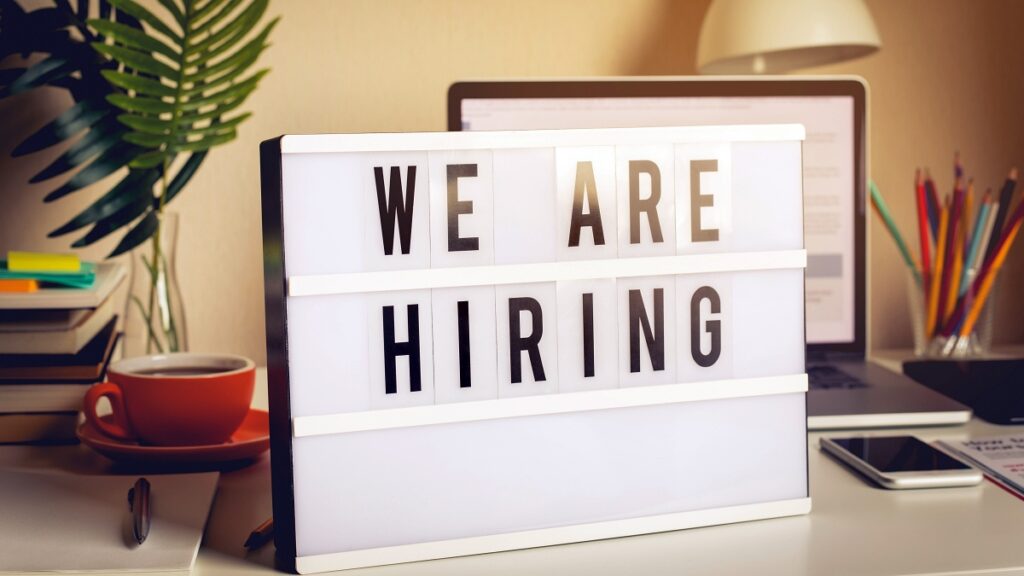Recruiting In the Era of Social Distancing

(Editor’s Note: Today’s article is brought to you by our friends at Criteria Corp, a leading provider of pre-employment testing services. If you want to learn more about how pre-employment testing can benefit your talent acquisition strategy, check out Criteria Corp’s “Definitive Guide to Pre-Employment Testing”. I’ve found it to be a comprehensive guide that I keep on the corner of my desk all the time. Enjoy!)
As organizations plan for reopening or ramping up their operations, they need to have a plan. And that plan should be in compliance with the Center for Disease Control (CDC) guidelines. But even as we’re dealing with fewer restrictions, that doesn’t change the fact that COVID-19 is still something we need to deal with.
I’m sure you’re talking with people and seeing the same comments that I am about whether or not it’s safe to go out or do certain activities. Customers are making decisions about their comfort level in visiting businesses. For example, should we dine inside a restaurant or get takeout. Employees will be making the same decisions about their comfort level with the organization. For instance, “Is this an employer that will make my safety and wellbeing a priority?”
Organizations Should Review Their Recruiting Processes
That’s why companies need to look at not only their customer processes but their employee processes. It starts with recruiting. Part of the organization’s reopening plan should be to be examining the current hiring process and look for areas that they might need to address.
We’re not just talking about the interview. How will all of the steps in the recruiting and hiring process be handled – from background checks to drug screens to orientation in the era of distancing? Here are a few things that smart companies are discussing:
Consider video screening and interviews. Obviously, this is becoming a very popular option right now. And there are some free providers, which is extra nice. But organizations will want to select the right technology for their needs and make sure data privacy isn’t an issue with the platform. In addition, it will be important to have a plan in place for candidates who do not have the technology capability to do a video interview.
Make decisions about logistics for in-person interviews. Video interviews will not be right for every organization and that’s fine. When it comes to the in-person interview, organizations will want to decide how they will handle masks (when they will be worn and removed), where interviews will be held (and how they will be cleaned between interviews), as well as the best way to respond to social greeting (like declining to shake hands).
Provide candidates with interview guidelines. Regardless of whether you’re recruiting with in-person or video interviews, organizations should provide candidates with information in advance about how the interview will be conducted. You don’t have to give out the questions in advance but do explain logistics. And if you’re doing video interviews, offer some tips for using the technology including what to do if it doesn’t work.
Remind managers that they still need to prepare. This is a new process that will impact everyone. Managers need to get comfortable with it as well. That might mean testing out a new technology. If they’re doing interviews from home, suggest that they wear their normal office attire (versus working from home attire). That might help set the right tone. And managers should be ready to discuss with candidates any changes to the job description because of COVID-19 such as temporarily allowing working from home, possible shift changes, etc.
Start the interview with some ground rules. Put the candidate at ease by explaining what will happen. If you’re conducting a video interview, let the candidate know that it’s okay if you hear dogs barking, kids laughing, and the garbage truck. It’s possible that the recruiter or hiring manager might have to apologize for their own background noises and interruptions. It’s just part of the new normal for recruiting.
Use assessments strategically. Due to adjustments in the hiring process, it’s possible that the organization might want to focus on skills like agility and trainability. I can see those qualities as being very important right now. Organizations might consider using a cognitive ability assessment and positioning it earlier in the process. The key is to align any assessment with the job and make sure it’s valid for recruitment and selection.
Wrap-up the interview by providing clear details. Tell candidates how to stay in touch. If the recruiter and hiring manager are working remotely, the best way to communicate might be different from when everyone was working in an office environment. It could also make some sense to let the candidate know that the final decision might take longer given the circumstances.
Include Safety and Distancing in the Candidate Experience
It is possible to give candidates a positive hiring experience even while distancing. In fact, candidates will appreciate knowing that the organization they’re interviewing with places a priority on employee safety and security in their recruiting. The key is planning a safe process and then communicating it to everyone involved.
If you want to learn more about talent management strategies to consider during this period of reopening and returning to the workplace, I hope you’ll listen in on this webinar with me and the Criteria Corp team focused on “Talent Management While Distancing: 7 Things to Consider”. We talk about activities that will help the business now and in the future.
13